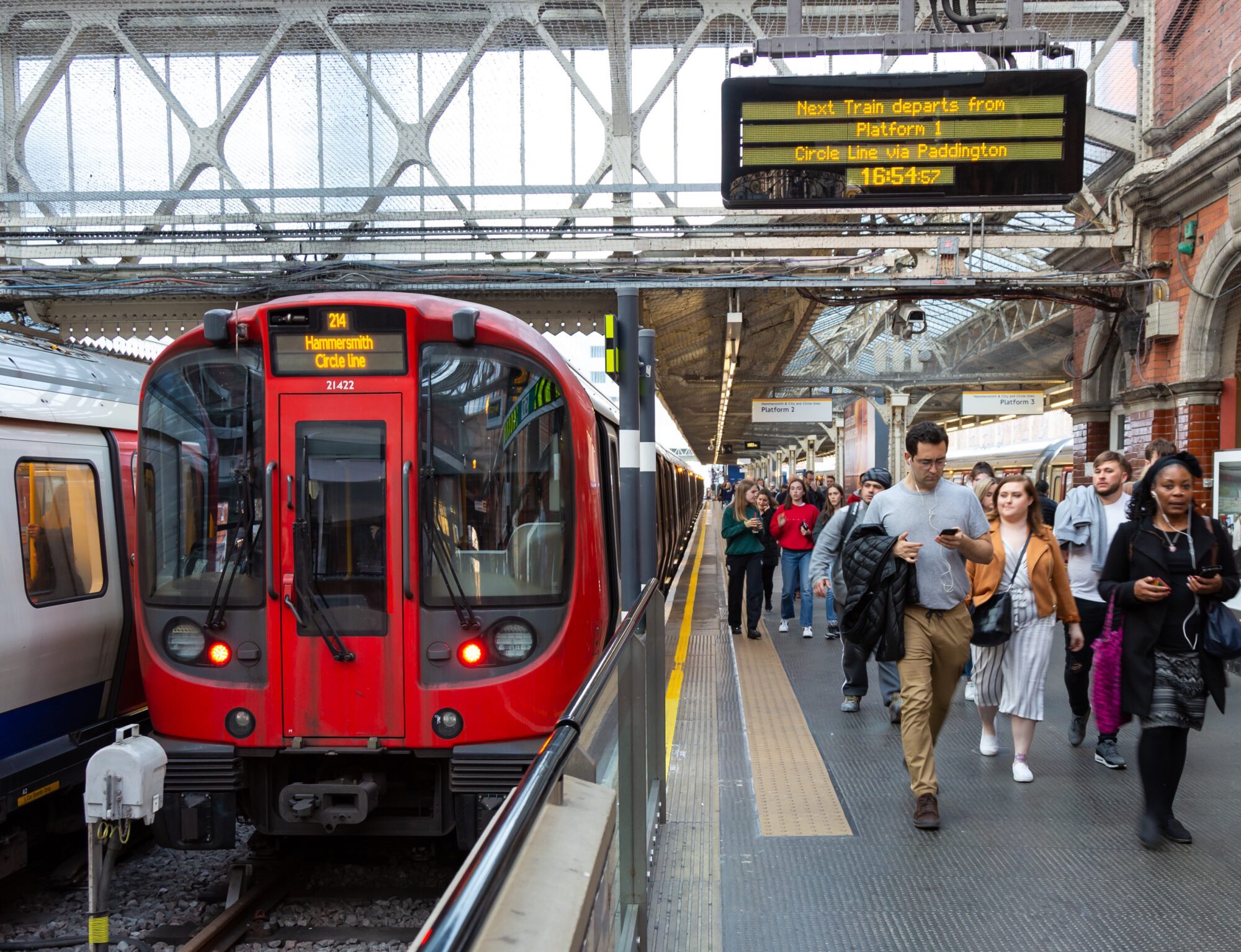The latest figures from Transport for London show that the Tube has reached four million journeys a day, a further step towards ridership returning to pre-pandemic levels.
Figures released for the last week in November showed 24.78 million Tube journeys were completed, with Thursday seeing the highest number of Tube journeys with around 4.05 million, demonstrating a further milestone for London’s transport network as it rebounds following the pandemic. This is up 7.6% on the equivalent day last year, when ridership was around 3.76m. With more than 500 trains in service across the network – more than 100 of which are around 50 years old – the Tube’s frequent service is vital for commuters, shoppers and visitors to London, as well as supporting economic growth in London and around the country.
Midweek ridership on the Tube is now regularly above 3.7m journeys and up around 6.5% compared to last year, with ridership on Monday and Friday now regularly above 3m journeys a day. Weekend ridership also continues to grow, with several Tube stations around central London already close to or exceeding levels seen before the pandemic. Ridership on the Night Tube and Night Overground services shows that around 60,000 journeys take place on a Friday night between 0030 and 0430, and close to 70,000 journeys on a Saturday night between 0030 and 0430 – showing that people across London are now enjoying all the night life that the city has to offer.
Across London, bus ridership also continues to grow, with around five million journeys now being made daily. The new Superloop network of limited-stop express bus routes, which by spring 2024 will circle the entire capital and connect key town centres, stations and transport hubs in outer London, are also helping to drive ridership in outer London.
The Elizabeth line has also massively helped to encourage people back onto public transport and supported these increases in ridership. Since it opened in May 2022, the line, which stretches from Reading and Heathrow in the west to Shenfield and Abbey Wood in the east, has now seen around 270 million journeys, and more than 720,000 journeys made each day during the Tuesday to Thursday period. The busiest day ever on the railway since opening was on November 9 last year, with more than 766,000 journeys, and it regularly has one of the highest customer satisfaction scores of all the TfL modes of transport.
Ridership across the Docklands Light Railway and London Overground networks are also continuing to grow towards levels seen before the pandemic, with around 325,000 journeys made on the DLR and around 625,000 journeys made on London Overground on an average weekday.
With ridership continuing to grow, and the latest estimates on population data from the Office of National Statistics suggesting that London’s population in mid-2022 was back to around 8.86m, it is essential that TfL invests to continue modernising its services to support rising demand and growth. TfL can cover the costs of three quarters of the vital capital investment next year, but is seeking confirmation that the Government will provide the remaining proportion that it has consistently acknowledged that TfL will need and will support jobs across London and the entire country.
Investment in London’s transport has direct and substantial benefits for jobs and growth outside the capital – whether through direct manufacturing or supply chains – with more than 100,000 jobs in TfL’s supply chain outside of London. If TfL were to receive a similar long-term capital funding deal, the number of jobs that could be unlocked across the UK, and the economic good this could deliver, would have the potential to grow significantly in the coming years.
The Mayor of London, Sadiq Khan said:
“It’s fantastic to see London truly roaring back post-pandemic – this impressive boost in ridership will support London’s and indeed the whole UK’s wider economy recovery.
“This data shows that people are returning to their pre-pandemic travel patterns. We can’t rest on our laurels – in order to further support this boom and deliver the world class transport system London deserves we need sustained capital investment over multiple years with support from central Government. This will help us support jobs and economic growth in London and across the country, and build a better, more prosperous London for all.”
Andy Lord, London’s Transport Commissioner, said:
“It’s great news that we are now seeing ridership numbers reach four million a day on the Tube again, and that ridership is growing across our services. Public transport is a fundamental component of our economic recovery, and we must continue to encourage public transport use if we are to revive and grow our economy.”
Shobi Khan, CEO of Canary Wharf Group, said:
“It’s fantastic to see London springing back to life, as evidenced by the growing activity here at Canary Wharf. Last year, we saw 54 million people visit the estate, this year we expect this number to reach over 65 million, the highest in CW’s history. Office workers, residents and visitors alike are enjoying the diverse dining, shopping, amenity and entertainment options across the estate.”
Ros Morgan, Chief Executive of Heart of London Business Alliance, said:
“London is bouncing back. Four million daily journeys on the Tube is a fantastic milestone. We need such a thriving transport network to support businesses and cultural institutions across the heart of London.
“Whilst visitors are returning to the West End, they are still yet to do so at pre-pandemic levels. That is why we continue to push for policies to encourage people to visit London, such as tax-free shopping for international visitors and long-term strategic funding for TfL to improve transport infrastructure.”
Find out more at www.tfl.gov.uk

